-
 Bitcoin
Bitcoin $117700
-1.00% -
 Ethereum
Ethereum $4458
-3.91% -
 XRP
XRP $3.119
0.14% -
 Tether USDt
Tether USDt $1.001
-0.02% -
 BNB
BNB $836.6
-1.56% -
 Solana
Solana $189.5
-3.90% -
 USDC
USDC $0.9998
-0.02% -
 Dogecoin
Dogecoin $0.2335
1.29% -
 Cardano
Cardano $0.9642
1.51% -
 TRON
TRON $0.3539
-1.19% -
 Hyperliquid
Hyperliquid $47.41
-1.84% -
 Chainlink
Chainlink $21.92
-3.28% -
 Stellar
Stellar $0.4286
-0.23% -
 Sui
Sui $3.724
-3.29% -
 Bitcoin Cash
Bitcoin Cash $594.8
-0.78% -
 Ethena USDe
Ethena USDe $1.001
0.04% -
 Hedera
Hedera $0.2501
-2.06% -
 Avalanche
Avalanche $23.96
-4.87% -
 Litecoin
Litecoin $119.0
-2.32% -
 Toncoin
Toncoin $3.473
0.82% -
 UNUS SED LEO
UNUS SED LEO $9.596
0.17% -
 Shiba Inu
Shiba Inu $0.00001301
-0.39% -
 Uniswap
Uniswap $11.03
-0.25% -
 Polkadot
Polkadot $3.935
-2.62% -
 Dai
Dai $1.000
0.01% -
 Bitget Token
Bitget Token $4.564
-1.76% -
 Cronos
Cronos $0.1512
-4.11% -
 Ethena
Ethena $0.7306
-1.09% -
 Pepe
Pepe $0.00001087
-2.68% -
 Aave
Aave $300.2
-4.00%
How to avoid transfer errors with USDT? How to verify the address?
To avoid USDT transfer errors, always select the correct network (TRC-20, ERC-20, or OMNI) and double-check the recipient's address before sending.
May 12, 2025 at 04:14 am
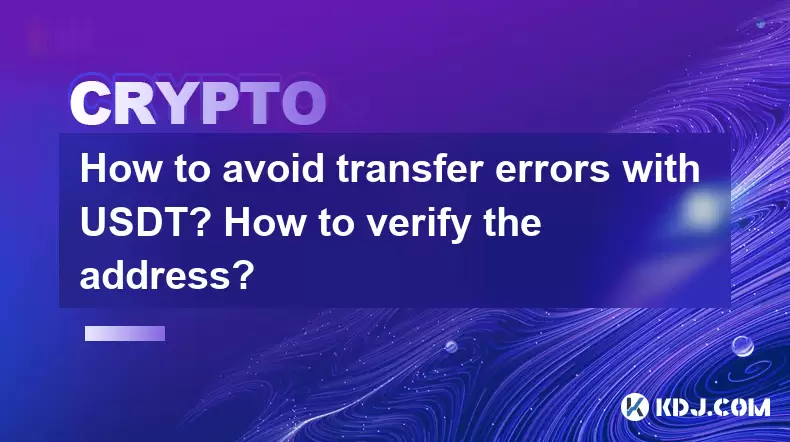
How to Avoid Transfer Errors with USDT? How to Verify the Address?
Transferring USDT (Tether) can be a straightforward process, but errors can occur if you're not careful. These errors can lead to loss of funds, so it's crucial to understand how to avoid them and verify the address before sending any USDT. This article will guide you through the steps to ensure your USDT transfers are safe and accurate.
Understanding USDT and Its Networks
USDT is a stablecoin pegged to the US dollar, designed to maintain a 1:1 value. It operates on several blockchain networks, including Tron (TRC-20), Ethereum (ERC-20), and Omni (OMNI). Each network has its own address format and transaction fees, so it's essential to know which network you're using.
- Tron (TRC-20): Addresses start with a 'T'.
- Ethereum (ERC-20): Addresses start with '0x'.
- Omni (OMNI): Addresses are similar to Bitcoin addresses, starting with '1' or '3'.
Common Transfer Errors and How to Avoid Them
Transfer errors with USDT often occur due to incorrect network selection or address input. Here are some common mistakes and how to avoid them:
Sending USDT to the Wrong Network: Ensure you select the correct network when sending USDT. For example, if you're sending TRC-20 USDT, make sure you're using the Tron network.
Incorrect Address: Double-check the recipient's address before sending. A single incorrect character can result in lost funds.
Insufficient Fees: Each network has different fee structures. Ensure you have enough in your wallet to cover the transaction fees.
Steps to Verify the Address Before Sending USDT
Verifying the address is crucial to avoid transfer errors. Here's how to do it:
Copy and Paste the Address: Instead of manually typing the address, copy and paste it from a reliable source. This reduces the chance of typos.
Use a QR Code: If available, use a QR code to scan the address. This is a quick and accurate way to input the address.
Double-Check the Address: After entering the address, double-check it against the original source. Look for any discrepancies.
Use Address Verification Tools: Some wallets and exchanges offer address verification tools. These tools can help confirm the address is correct before sending.
Using Wallets and Exchanges to Send USDT
Different wallets and exchanges have different interfaces, but the general process for sending USDT is similar. Here's how to do it on a typical platform:
Select the USDT Token: Choose the USDT token you want to send (TRC-20, ERC-20, or OMNI).
Enter the Recipient's Address: Carefully enter or paste the recipient's address.
Specify the Amount: Enter the amount of USDT you want to send.
Select the Network: Ensure you select the correct network for the USDT token you're sending.
Review and Confirm: Review all the details, including the address, amount, and network. Confirm the transaction once you're sure everything is correct.
Additional Tips for Safe USDT Transfers
To further ensure the safety of your USDT transfers, consider these additional tips:
Use Trusted Wallets and Exchanges: Only use reputable platforms to send and receive USDT. Research the platform's security measures and user reviews.
Enable Two-Factor Authentication (2FA): Enable 2FA on your wallet or exchange account to add an extra layer of security.
Keep Your Private Keys Secure: Never share your private keys with anyone. Store them in a secure location, such as a hardware wallet.
Monitor Your Transactions: After sending USDT, monitor the transaction on a blockchain explorer to ensure it was successful.
Frequently Asked Questions
Q: Can I recover USDT sent to the wrong address?
A: Unfortunately, blockchain transactions are irreversible. If you send USDT to the wrong address, it's usually impossible to recover the funds. Always double-check the address before sending.
Q: What should I do if I'm unsure about the network to use for USDT?
A: If you're unsure about the network, contact the recipient to confirm which network they prefer. You can also check the address format to determine the correct network.
Q: How long does it take for a USDT transaction to complete?
A: The time it takes for a USDT transaction to complete depends on the network. TRC-20 transactions are typically faster, often completing within minutes, while ERC-20 transactions can take longer, sometimes up to an hour.
Q: Can I send USDT from one network to another?
A: No, you cannot send USDT from one network to another directly. For example, you cannot send TRC-20 USDT to an ERC-20 address. You would need to convert the USDT to another cryptocurrency, transfer it to the desired network, and then convert it back to USDT.
Disclaimer:info@kdj.com
The information provided is not trading advice. kdj.com does not assume any responsibility for any investments made based on the information provided in this article. Cryptocurrencies are highly volatile and it is highly recommended that you invest with caution after thorough research!
If you believe that the content used on this website infringes your copyright, please contact us immediately (info@kdj.com) and we will delete it promptly.
- Kazakhstan's Crypto Leap: Bitcoin ETF and Central Asia's Digital Finance Future
- 2025-08-13 12:45:19
- BlockDAG Presale Blazes Past $371M: Fundraising Frenzy Fuels Crypto Sensation
- 2025-08-13 13:05:21
- Meme Coins: Chasing the 2025 Surge – Which Will Moonshot?
- 2025-08-13 10:25:23
- Bitcoin's Wild Ride: Rally, Pullback, and What's Next
- 2025-08-13 10:25:23
- Bitcoin, Bitmax, and Institutional Demand: A New Era of Crypto Investment
- 2025-08-13 10:45:12
- Solana, ROAM, and Airdrops: What's the Buzz in 2025?
- 2025-08-13 11:35:13
Related knowledge
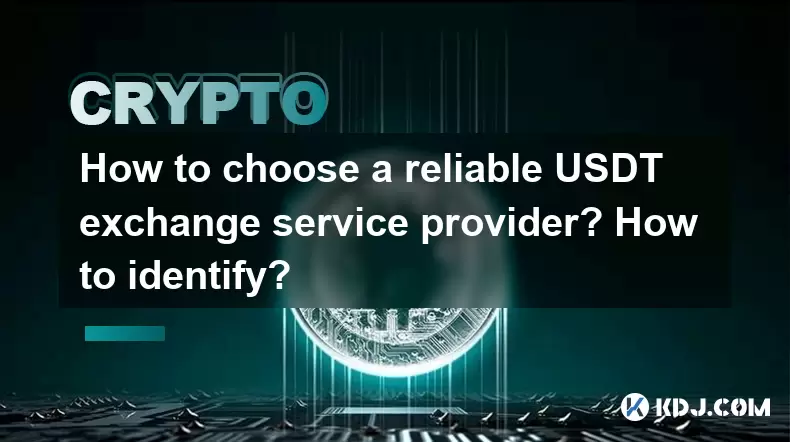
How to choose a reliable USDT exchange service provider? How to identify?
Jun 12,2025 at 03:15pm
Understanding the Role of USDT in Cryptocurrency TradingUSDT (Tether) is one of the most widely used stablecoins in the cryptocurrency market. It is d...
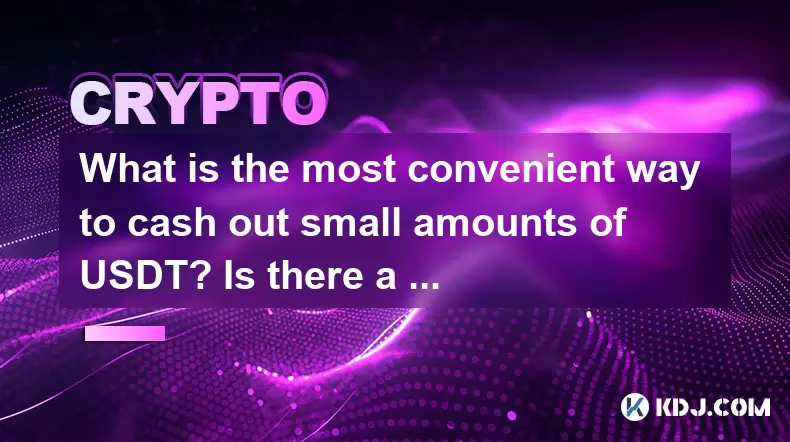
What is the most convenient way to cash out small amounts of USDT? Is there a shortcut?
Jun 11,2025 at 11:00pm
Understanding the Need to Cash Out Small USDT AmountsCashing out small amounts of USDT can be a challenge for many crypto users. Traditional methods o...
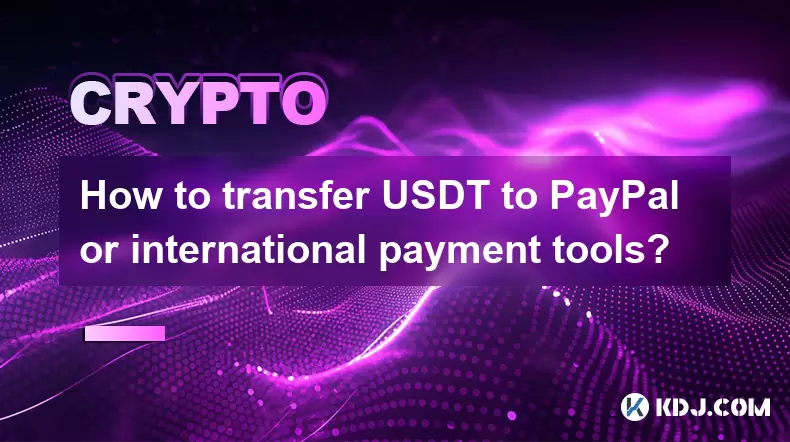
How to transfer USDT to PayPal or international payment tools?
Jun 15,2025 at 05:28am
Understanding the Basics of USDT and PayPal IntegrationUSDT (Tether) is a stablecoin pegged to the US dollar, offering blockchain-based value transfer...
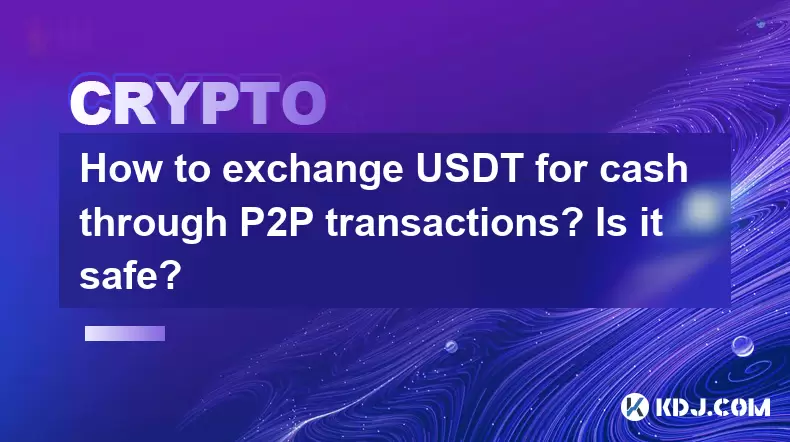
How to exchange USDT for cash through P2P transactions? Is it safe?
Jun 18,2025 at 07:56am
Understanding USDT and P2P TransactionsTether (USDT) is a stablecoin pegged to the value of the US dollar, making it a popular choice for users who wa...
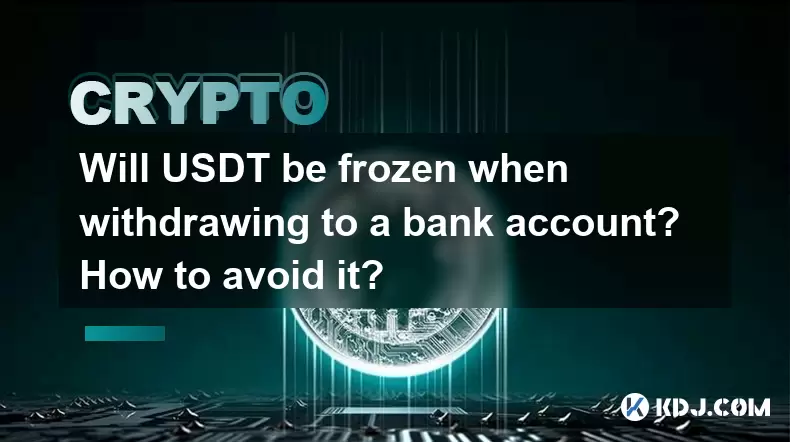
Will USDT be frozen when withdrawing to a bank account? How to avoid it?
Jun 15,2025 at 10:03am
Understanding USDT Withdrawals and Bank Account Freezing RisksWhen users decide to withdraw USDT (Tether) to a bank account, one of the most common co...

How to avoid risks when exchanging USDT for cash? What are the pitfalls?
Jun 11,2025 at 08:14pm
Understanding the Risks of Exchanging USDT for CashWhen exchanging USDT (Tether) for cash, users must be aware of the potential risks involved. As a s...

How to choose a reliable USDT exchange service provider? How to identify?
Jun 12,2025 at 03:15pm
Understanding the Role of USDT in Cryptocurrency TradingUSDT (Tether) is one of the most widely used stablecoins in the cryptocurrency market. It is d...

What is the most convenient way to cash out small amounts of USDT? Is there a shortcut?
Jun 11,2025 at 11:00pm
Understanding the Need to Cash Out Small USDT AmountsCashing out small amounts of USDT can be a challenge for many crypto users. Traditional methods o...

How to transfer USDT to PayPal or international payment tools?
Jun 15,2025 at 05:28am
Understanding the Basics of USDT and PayPal IntegrationUSDT (Tether) is a stablecoin pegged to the US dollar, offering blockchain-based value transfer...

How to exchange USDT for cash through P2P transactions? Is it safe?
Jun 18,2025 at 07:56am
Understanding USDT and P2P TransactionsTether (USDT) is a stablecoin pegged to the value of the US dollar, making it a popular choice for users who wa...

Will USDT be frozen when withdrawing to a bank account? How to avoid it?
Jun 15,2025 at 10:03am
Understanding USDT Withdrawals and Bank Account Freezing RisksWhen users decide to withdraw USDT (Tether) to a bank account, one of the most common co...

How to avoid risks when exchanging USDT for cash? What are the pitfalls?
Jun 11,2025 at 08:14pm
Understanding the Risks of Exchanging USDT for CashWhen exchanging USDT (Tether) for cash, users must be aware of the potential risks involved. As a s...
See all articles

























































































